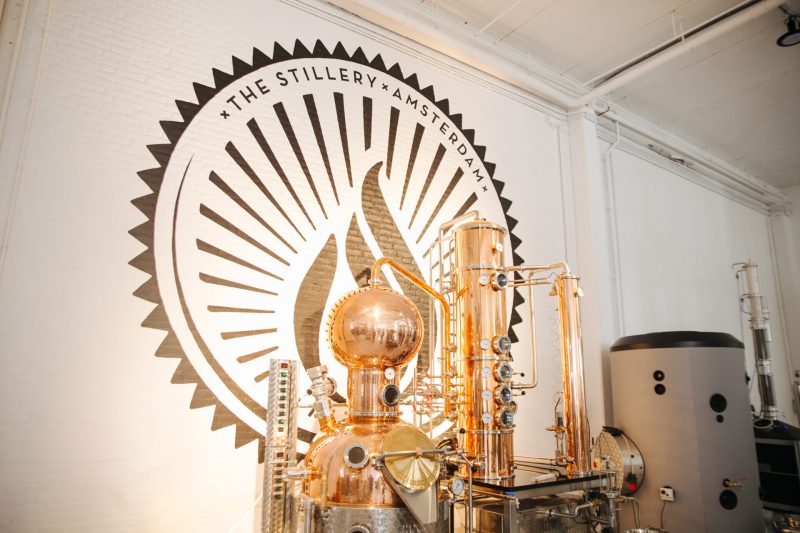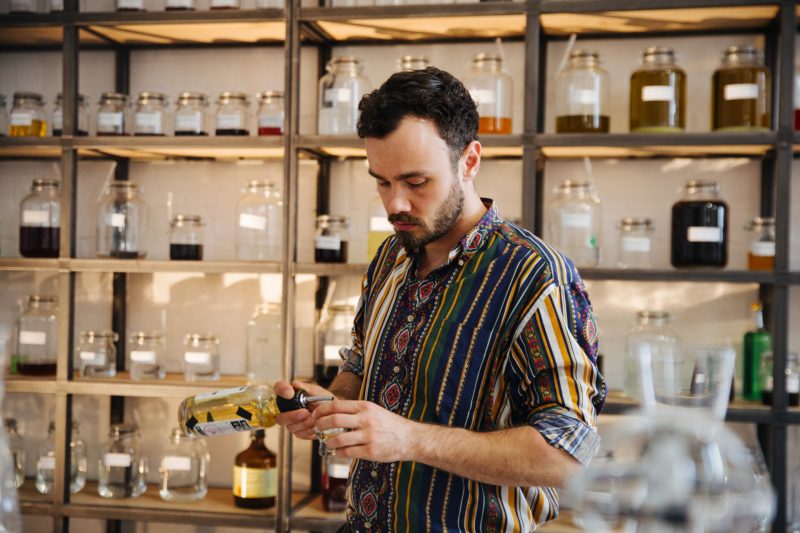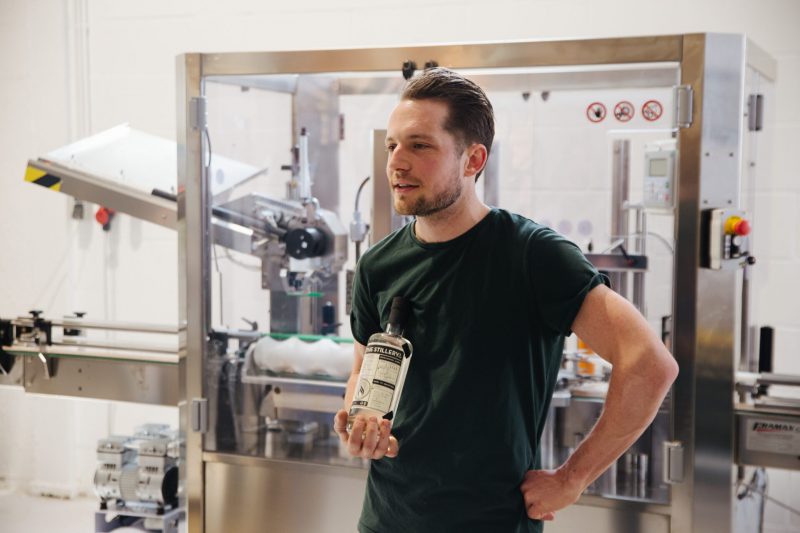
12 Aug The Stillery, Amsterdam Gold
It could easily be the most radiant centrepiece of the Amsterdam harbour: the shiny copper still of The Stillery, their own distillery. For the opening, this Müller still has been polished extra hard and is shining brightly, amidst all the stainless steel tanks that fill the space. And it is precisely this combination, the copper still and those steel tanks, that makes something special happen here. The true meaning of craft is defined here. A year after the opening, there is now the ultimate crowning: 2 gold medals and a master title at “The Spirits Business” Masters. The vodka scores a gold medal in both the organic and premium categories and a general European Masters award. This is the highest possible honour within the competition. The annual spirit competition showcases the spirits that are winning over an international audience of master tasters. This year, the judges were unanimous in awarding the Amsterdam distillery’s vodka a gold medal in the organic and premium categories. In addition to double gold, the spirit was also awarded a European Master title. “It’s like winning the Champions League for vodka,” says founder Pascal Peeters. The spirit previously won a silver medal in 2017. This was before The Stillery opened its new craft distillery last year. The term craft has been used frequently on many bottles in recent years, alongside terms such as handmade, carefully selected and premium. Don’t get me wrong, these terms can be used well with the various brands that do this, but it is of course interesting to see how crafted a drink actually is. Most gins that you can find on the market now come from a copper still. These have to be filled by hand with alcohol and botanicals. Craft, in other words. Most new jenevers also come from copper stills, again filled by hand. What these drinks have in common is that their base alcohol is made at a different location. Often the difference is made in the distillery by distilling it again there.

Robin Karels pours The Stillery’s Ouwe.
First there was First
For the development of their vodka, The Stillery’s First, the 3 owners decided that they did not want to settle for that general base alcohol. They also wanted to control this step in the making of their drink themselves and decided to grind, mash, ferment and distill the grain themselves. That this is a costly and time-consuming activity may be clear. But if you are put together like this, this is the only way to go, a kind of all-or-nothing principle. Until they moved into their current distillery in the Western Docklands last February, the production of their vodka and their jenever (The Stillery’s Ouwe) was outsourced to a third party. Since then, they have simply been doing very well in their own distillery, where everything is brought together and where everything is made. The 3 owners of The Stillery, Pascal Peeters (founder and distiller), Robin Karels (co-founder, creative director) and Daan Choy (structuring things since 2016) give us a tour of the various tanks, kettles and instruments. At the front of the room are all the pots that were once stacked in Peeters’ student room, the place where the idea for The Stillery started. Over the years, he has distilled, macerated and extracted hundreds of different botanicals in them. And now they form a flavour library that has served as the basis for their new gin: The Stillery’s Most Floral Gin. Because this one is floral, let there be no misunderstanding about that. There are also large stainless steel kettles for mashing. Here, the starch in the grain is converted into sugars. These are then fermented and converted into alcohol by yeast. This then goes into the shiny copper kettle to be transformed into vodka, gin or genever. Pure magic.

This is where the grain goes to be ground
Everything local
The great thing about these three spirits is that all the ingredients come from the area. The spelt grain, rye and grain that are used as a basis for all three spirits are grown around Amsterdam. The flowers and herbs in the gin come from the Amsterdam area, which determine the flavour. The shelves full of distillates also have tasting glasses, in which the three distillates are poured for us: it is time to taste. And of course we do this in chronological order. The Stillery’s First, the vodka (launched in 2015), expertly dispels the idea that vodka should be tasteless. This one actually has a lot of character and flavours such as white chocolate and a malty character. Top. The Stillery’s Ouwe (genever) has matured for 3 months in ex-bourbon barrels. The light green glow comes from a tincture of hops. A beautiful, full genever (oude refers to an old genever, so with a higher percentage of malt wine of 27%) and in our minds we already make a combination for a kopstoot. Thirdly, the Gin. We taste juniper of course, but in addition there are 17 botanicals, which we need some explanation for. Rosehip, blackthorn blossom, poppy flower, daisy and Malva Sylvestrus we are told.
We conclude that the opening of this distillery sets a new standard. Not only for Amsterdam, but for the Netherlands. Of course, the distillery can be visited by anyone interested to admire the result with their own eyes. You can taste, but also experiment with distilling yourself. Please do contact us in advance! Getting thirsty? The different distillates can be tasted in several leading bars in Amsterdam and of course for sale in the better liquor store. Online you can buy The Stillery’s Ouwe here, the gin here and the vodka here.

Pascal Peeters in front of their labeling machine



No Comments